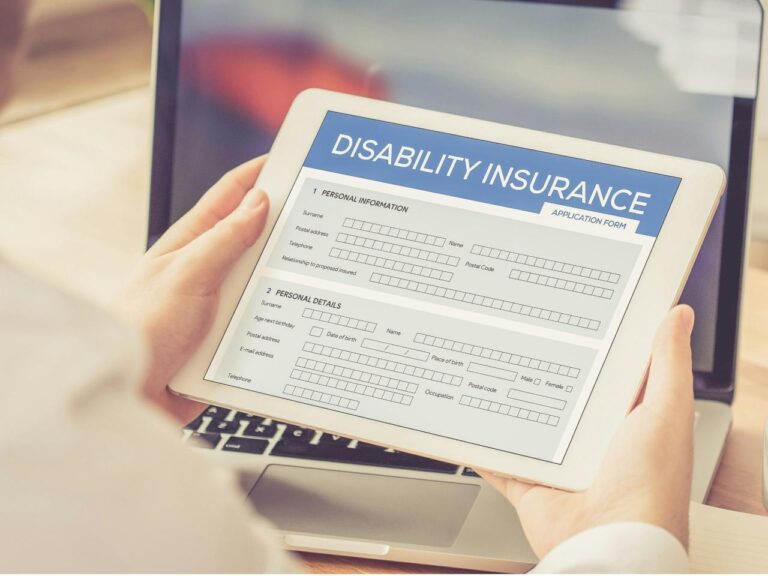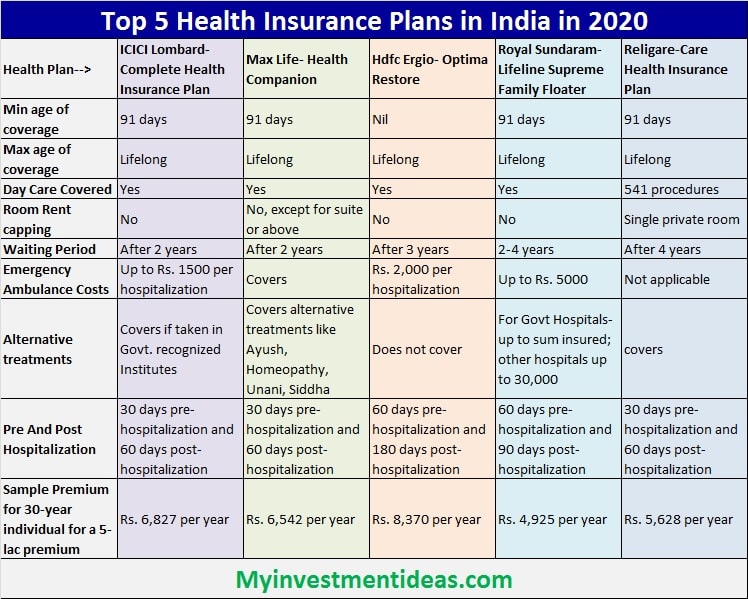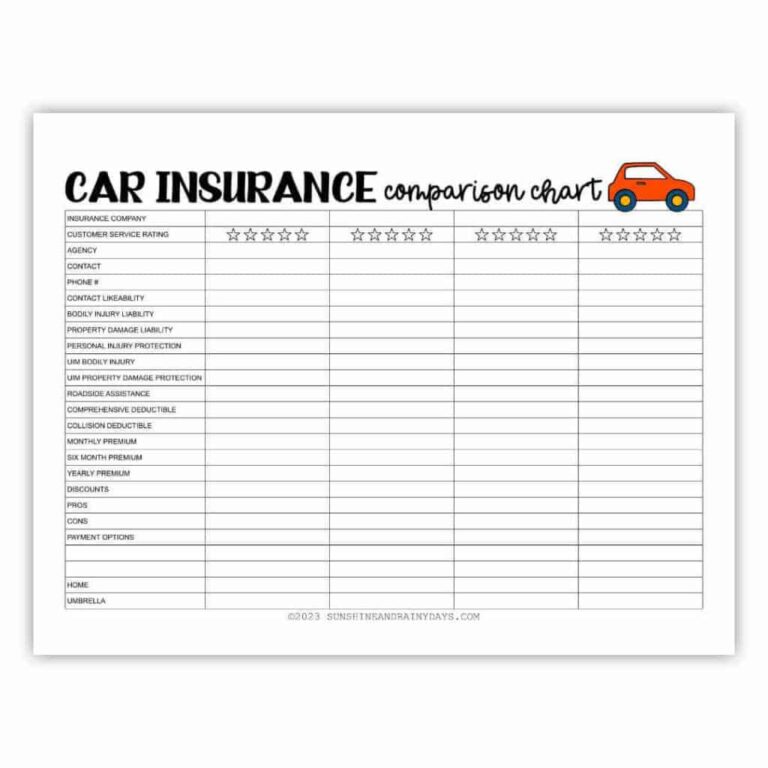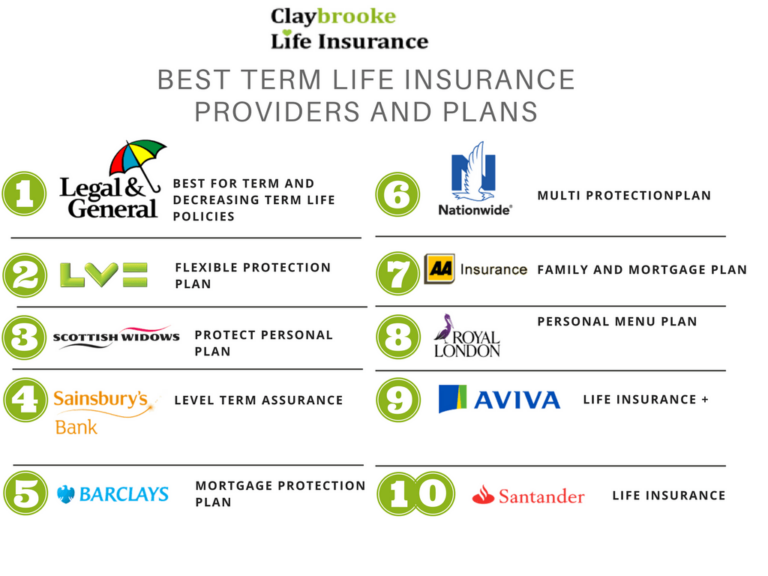Business liability insurance is your safety net. It protects your business from financial ruin caused by accidents, injuries, or mistakes that happen on your property, during your operations, or as a result of your products or services. This crucial coverage isn’t just for large corporations; even small businesses face significant risks daily. Understanding the different types of liability insurance, the factors affecting costs, and the claims process is essential for any business owner aiming for long-term success and peace of mind.
This guide will walk you through the essentials of business liability insurance, explaining the various types of coverage available, how to choose the right policy, and strategies for managing your risk. We’ll explore real-world scenarios to illustrate the importance of this protection and offer practical advice on minimizing your exposure to liability claims.
What is Business Liability Insurance?
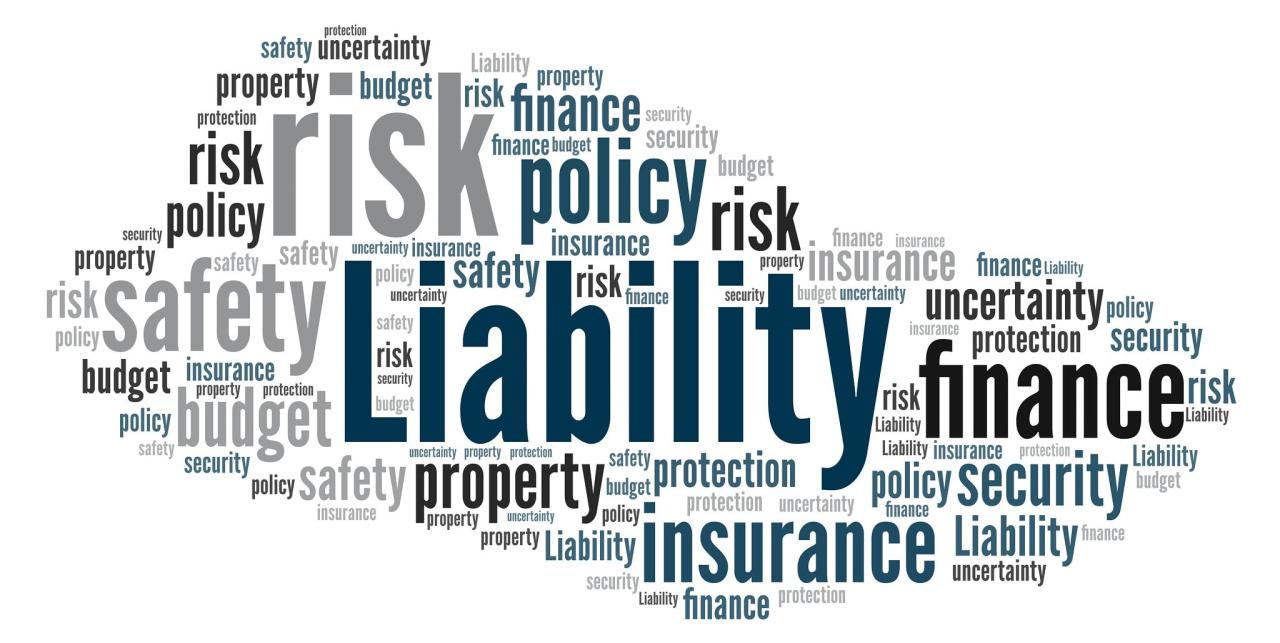
Business liability insurance is essentially a safety net for your company. It protects you financially if someone gets hurt or suffers a loss because of your business’s actions or negligence. Think of it as an insurance policy that covers the costs associated with lawsuits, settlements, and legal fees stemming from various incidents related to your business operations. It’s a crucial aspect of risk management for any business, regardless of size or industry.Business liability insurance isn’t a single, monolithic product; it encompasses several different types of coverage, each designed to address specific risks.
Understanding these different types is key to ensuring you have adequate protection for your business.
Types of Business Liability Insurance
The different types of business liability insurance offer protection against a range of potential liabilities. Choosing the right combination depends heavily on the nature of your business and the specific risks you face. For example, a construction company will have vastly different liability exposures than a bakery.
- General Liability Insurance: This is the most common type, covering bodily injury or property damage caused by your business operations. This could include a customer slipping and falling in your store, or damage to a client’s property during a service call.
- Professional Liability Insurance (Errors and Omissions Insurance): This protects professionals like doctors, lawyers, and consultants against claims of negligence or mistakes in their professional services. A lawyer could be sued for missing a filing deadline, for instance, or a consultant for providing faulty advice.
- Product Liability Insurance: If your business manufactures or sells products, this coverage protects you against claims of injury or damage caused by those products. A faulty toy causing an injury, or a defective food item causing illness, are examples of situations this would cover.
- Commercial Auto Insurance: This covers accidents involving company vehicles. This is vital if your employees use company cars or trucks for work-related purposes.
- Workers’ Compensation Insurance: This insurance covers medical expenses and lost wages for employees injured on the job. This is usually mandated by law in most jurisdictions.
Examples of Beneficial Situations
Let’s look at some real-world scenarios where business liability insurance proves invaluable:A small coffee shop owner accidentally spills hot coffee on a customer, causing a burn. General liability insurance would cover the customer’s medical expenses and any potential legal fees.A software company releases a program with a critical bug that causes a client significant financial losses. Professional liability insurance (Errors and Omissions) could help cover the costs of resolving the issue and compensating the client.A food manufacturer discovers a contamination issue in their product line.
Product liability insurance would help cover the costs of a recall, legal fees, and compensation to affected consumers.A delivery driver for an online retailer causes an accident while making a delivery. Commercial auto insurance would cover the damages to the other vehicle and any injuries sustained.
Types of Business Liability Insurance Coverage
Protecting your business from financial ruin due to lawsuits is crucial. Business liability insurance comes in several forms, each designed to cover specific risks. Understanding these different types is vital for choosing the right coverage for your unique needs and mitigating potential financial losses. This section will Artikel several key types of business liability insurance.
General Liability Insurance, Business liability insurance
General liability insurance is the cornerstone of most business liability protection. It covers bodily injury or property damage caused by your business operations to third parties. This could include a customer slipping and falling in your store, damage to a client’s property during a service call, or even reputational harm stemming from an accident on your premises. The coverage typically includes medical expenses, legal fees, and settlements or judgments awarded against your business.
It’s important to note that general liability insurance generallydoesn’t* cover injuries to your employees; that’s typically covered under workers’ compensation insurance (which is a separate policy). Think of it as your all-around protection for everyday business risks.
Professional Liability Insurance (Errors and Omissions Insurance)
Professional liability insurance, also known as errors and omissions (E&O) insurance, protects professionals from claims of negligence or mistakes in their services. This is particularly important for businesses offering advice, consulting, design, or other professional services. If a client sues you for a mistake you made in your professional work – a faulty design, incorrect financial advice, or a missed deadline resulting in financial losses for the client – this insurance would cover your legal defense costs and any settlements or judgments.
For example, an architect whose design leads to structural problems in a building, or a financial advisor who provides incorrect investment advice, would benefit greatly from having E&O insurance.
Product Liability Insurance and Commercial Auto Insurance: A Comparison
Product liability insurance protects your business from claims related to injuries or damages caused by your products. If a customer is injured by a faulty product you manufactured or sold, this insurance covers the resulting legal costs and compensation. Commercial auto insurance, on the other hand, covers accidents involving your company vehicles. This includes injuries to others, damage to other vehicles, and property damage caused by your employees while driving company cars.
While both protect against liability, they address distinct risks: product liability focuses on the goods you produce or sell, while commercial auto focuses on the risks associated with your vehicles. A manufacturing company needs both; the product liability covers defective products, while commercial auto covers accidents involving company delivery trucks.
Umbrella Liability Insurance
Umbrella liability insurance provides an additional layer of protection above your existing liability policies. It kicks in after your general liability, professional liability, and other liability policies have reached their limits. Think of it as a safety net for exceptionally large claims or lawsuits that could financially devastate your business. For example, if a significant accident results in a multi-million dollar lawsuit exceeding the limits of your other policies, your umbrella policy would help cover the remaining costs.
It’s a cost-effective way to safeguard against catastrophic events.
| Type of Insurance | Coverage | Key Risks Covered | Example |
|---|---|---|---|
| General Liability | Bodily injury or property damage to third parties | Slip and fall accidents, property damage during service | Customer injured in your store |
| Professional Liability (E&O) | Negligence or mistakes in professional services | Faulty advice, design flaws, missed deadlines | Architect’s design causing structural problems |
| Product Liability | Injuries or damages caused by defective products | Faulty products causing harm to consumers | Defective toy causing injury to a child |
| Commercial Auto | Accidents involving company vehicles | Accidents, injuries, property damage | Company truck causing an accident |
Factors Affecting Business Liability Insurance Costs

Getting the right business liability insurance is crucial, but the cost can vary wildly. Understanding the factors that influence premiums allows you to make informed decisions and potentially save money. Several key elements contribute to the final price you pay.Several interconnected factors determine the cost of your business liability insurance premiums. These factors are often assessed by insurance companies to evaluate the level of risk associated with your business.
A higher perceived risk translates to higher premiums.
Industry Type and Risk Profile
The type of industry your business operates in significantly impacts your insurance costs. High-risk industries, like construction or manufacturing, typically face higher premiums due to the inherent dangers and potential for accidents and injuries. Conversely, businesses in lower-risk sectors, such as administrative services, might secure more affordable coverage. For example, a construction company will pay considerably more for general liability insurance than a bookstore, reflecting the increased likelihood of workplace accidents and third-party injuries in the construction field.
The insurance company’s risk assessment model considers the statistical probability of claims within each industry sector.
Claims History
Your business’s claims history is a major factor in determining your premiums. A history of numerous or substantial claims will likely result in higher premiums, as insurers perceive a greater risk of future claims. Conversely, a clean claims history—meaning no or very few claims—can lead to lower premiums and potentially even discounts. Insurance companies use actuarial data to analyze past claims and predict future losses, influencing the pricing for individual businesses.
A company with a history of successfully managing risk and avoiding claims will be viewed as a lower-risk client.
Business Size and Revenue
The size and revenue of your business also influence insurance costs. Larger businesses with higher revenues often face higher premiums because they typically have more employees, operate on a larger scale, and therefore have a potentially greater exposure to liability. A larger operation implies a greater potential for accidents or incidents that could result in significant financial losses. The insurance company will consider the number of employees, the size of the business premises, and the annual revenue when calculating premiums.
A small bakery, for example, will generally have lower premiums than a large manufacturing plant.
Location
The geographic location of your business plays a role in determining insurance costs. Areas with higher crime rates or a greater frequency of natural disasters may lead to higher premiums. Insurance companies consider factors like the frequency of accidents, lawsuits, and weather-related events specific to your region. A business located in a high-crime area might face higher premiums due to the increased risk of theft, vandalism, or other incidents leading to liability claims.
Similarly, a business in an area prone to earthquakes or hurricanes would see higher premiums to reflect the increased risk of property damage and related liabilities.
Risk Management Practices
Implementing robust risk management practices can significantly reduce your liability insurance costs. Insurers reward businesses that actively work to mitigate risk. This includes things like having a comprehensive safety program, providing employee training, maintaining detailed records, and implementing preventative measures to reduce the likelihood of accidents. Demonstrating a commitment to safety and risk reduction can lead to lower premiums and potentially favorable policy terms.
For instance, a business with a detailed safety plan, regular employee safety training, and meticulous record-keeping will likely be viewed as a lower-risk client compared to a business with no formal safety program.
The Claims Process
Filing a business liability insurance claim can seem daunting, but understanding the process can significantly ease the burden. It’s crucial to act promptly and accurately to maximize your chances of a successful claim. This section Artikels the steps involved, the necessary information, the adjuster’s role, and provides common claim examples.
Steps Involved in Filing a Claim
The claims process generally begins with immediate notification to your insurance provider. This usually involves a phone call to their claims hotline, followed by submitting a written claim form. This form will require detailed information about the incident, as discussed below. Following the initial report, an adjuster will be assigned to investigate the claim. This investigation may involve reviewing documents, interviewing witnesses, and inspecting the site of the incident.
Once the investigation is complete, the adjuster will make a determination regarding liability and the amount of coverage. Finally, the insurance company will issue a payment or denial of the claim, along with a detailed explanation of their decision.
Information Required When Making a Claim
Providing complete and accurate information is vital for a smooth claims process. You’ll typically need to provide details such as the date, time, and location of the incident; a description of the incident itself; the names and contact information of all involved parties (including witnesses); any relevant police reports or medical records; and supporting documentation like invoices or repair estimates.
The more comprehensive the information provided, the faster and more efficient the claims process will be. Omitting crucial details can lead to delays or even a claim denial.
The Role of an Insurance Adjuster
The insurance adjuster is a crucial figure in the claims process. They are responsible for investigating the claim, assessing the damages, and determining the amount of compensation to be paid. They act as a liaison between the insurance company and the policyholder. Adjusters review all evidence provided, including witness statements, police reports, and medical records. They will also often conduct their own investigation, which may involve visiting the site of the incident or interviewing involved parties.
Their objective is to determine the extent of the insurer’s liability and fairly assess the claim.
Examples of Common Claim Scenarios
Common liability claims include bodily injury caused by a customer slipping and falling on your premises; property damage caused by a fire that originated in your business; advertising injury resulting from a false or misleading advertisement; professional liability claims arising from errors or omissions in professional services; and claims related to product liability if a defect in your product caused harm.
Each scenario requires specific documentation and evidence to support the claim. For example, a slip-and-fall claim would necessitate photographic evidence of the hazard, witness statements, and medical records documenting the injured party’s treatment. A fire claim would require a fire marshal’s report and detailed records of the damage.
Choosing the Right Business Liability Insurance Policy
Selecting the appropriate business liability insurance policy is crucial for protecting your business from financial ruin. A poorly chosen policy can leave you vulnerable to significant costs associated with lawsuits, accidents, or property damage. Understanding your needs and comparing options carefully is essential to securing adequate coverage.
Business Liability Insurance Policy Checklist
This checklist will help you systematically evaluate different liability insurance policies. Remember, each business has unique needs, so tailor the checklist to your specific circumstances. Don’t hesitate to consult with an insurance professional for personalized guidance.
- Identify Your Business Risks: List potential liabilities specific to your industry and operations. For example, a restaurant faces different risks than a software company.
- Determine Coverage Amounts: Establish appropriate limits for liability coverage. Consider the potential costs of lawsuits and settlements in your area. Consult with an insurance professional to determine adequate limits.
- Compare Policy Exclusions: Carefully review what is
-not* covered by each policy. Some policies exclude specific types of claims or activities. - Review Policy Definitions: Understand the definitions of key terms within the policy, such as “occurrence,” “bodily injury,” and “property damage.”
- Check for Additional Coverages: Explore options like umbrella liability insurance, which provides additional coverage beyond your primary policy limits.
- Assess the Insurer’s Financial Stability: Research the insurer’s financial strength ratings from agencies like A.M. Best to ensure they can pay claims if needed.
- Read Customer Reviews: Check online reviews and ratings to gauge the insurer’s customer service and claims-handling process.
Comparison of Insurance Providers
Direct comparison of insurance providers requires obtaining quotes from multiple companies. The following table illustrates a hypothetical comparison, focusing on price and coverage. Remember, actual quotes will vary significantly based on your business type, location, and risk profile.
| Provider | Annual Premium | General Liability Limit | Professional Liability Limit (if applicable) | Other Key Coverages |
|---|---|---|---|---|
| Acme Insurance | $1,500 | $1,000,000 | $500,000 | Umbrella Liability (optional) |
| Beta Insurance | $1,200 | $500,000 | N/A | Product Liability |
| Gamma Insurance | $1,800 | $2,000,000 | $1,000,000 | Cyber Liability |
Negotiating Insurance Premiums
Negotiating insurance premiums is possible, but requires preparation. Presenting a strong case, highlighting your risk mitigation strategies, and comparing quotes effectively are key.
- Demonstrate Risk Mitigation: Show the insurer how you’ve reduced your risk, such as implementing safety measures or employee training programs.
- Bundle Policies: Consider bundling your liability insurance with other types of insurance, such as property or workers’ compensation, for potential discounts.
- Explore Payment Options: Inquire about payment plans or discounts for paying premiums annually.
- Shop Around: Obtain quotes from multiple insurers to leverage competition and negotiate favorable terms.
- Negotiate Coverage Limits: Consider starting with a higher coverage limit and negotiating downward to find a balance between cost and coverage.
Importance of Carefully Reading Policy Documents
Thoroughly reviewing your policy documents is non-negotiable. Understanding the details will prevent misunderstandings and ensure you have the coverage you need when a claim arises.
“Failing to read your policy can lead to significant financial losses if a claim is denied due to a lack of understanding of the policy’s terms and conditions.”
- Focus on Exclusions: Pay close attention to what is explicitly excluded from coverage.
- Understand Definitions: Clarify the meaning of any terms or phrases you don’t understand.
- Review Conditions: Understand the conditions that must be met to trigger coverage.
- Ask Questions: Don’t hesitate to contact your insurer to clarify any ambiguities or uncertainties.
Illustrative Scenarios
Real-world examples can help clarify the different types of business liability insurance and how they protect businesses. Understanding these scenarios can help you better assess your own insurance needs.
Customer Injury on Business Premises
Imagine a bustling coffee shop, “The Daily Grind.” A customer, Sarah, trips over a loose floorboard near the entrance, fracturing her wrist. Sarah sues The Daily Grind, claiming negligence. The coffee shop’s general liability insurance policy covers medical expenses, legal fees, and potential settlement costs associated with Sarah’s injury. The insurance company investigates the claim, reviews the evidence (including photos of the loose floorboard), and negotiates a settlement with Sarah’s lawyer.
The outcome is a financial settlement to cover Sarah’s medical bills and pain and suffering, paid by the insurance company, protecting The Daily Grind from significant financial loss.
Malpractice Claim Against a Consultant
John, a financial consultant, advises a small business, “Tech Solutions,” to invest heavily in a specific cryptocurrency. His advice proves disastrous, and Tech Solutions suffers substantial financial losses. Tech Solutions sues John, claiming professional negligence and malpractice. John’s professional liability insurance, also known as errors and omissions insurance, covers the legal defense costs and any potential damages awarded to Tech Solutions.
The insurance company investigates the claim, reviews John’s financial advice and market analysis at the time of the recommendation. If it is found John’s advice was negligent, the insurance company may settle with Tech Solutions or defend John in court. The outcome depends on the specifics of the case and the strength of the evidence presented.
Defective Product Claim Against a Manufacturer
“ToyTime,” a toy manufacturer, releases a new line of children’s building blocks. A design flaw causes a small part of the blocks to detach easily, posing a choking hazard. A child, Liam, chokes on a detached piece, requiring emergency medical treatment. Liam’s parents sue ToyTime for product liability. ToyTime’s product liability insurance covers the costs associated with the lawsuit, including legal fees, settlements, and product recalls.
The insurance company investigates the incident, examining the design and manufacturing processes of the blocks. They may recall the defective product line and pay for Liam’s medical expenses and any settlement reached with his parents. The outcome involves a combination of financial compensation to Liam’s family and steps to prevent future incidents, all managed by the insurance company.
Protecting Your Business Beyond Insurance
Insurance is a crucial safety net, but it shouldn’t be your only line of defense against liability. Proactive risk management is key to minimizing the chances of a lawsuit in the first place, saving you money and headaches down the road. A comprehensive approach combines insurance with practical steps to prevent problems before they arise.
Risk Management Strategies
Implementing effective risk management strategies is vital for reducing liability exposure. A proactive approach, rather than a reactive one, significantly minimizes the likelihood of costly legal battles and reputational damage. This involves a systematic identification of potential hazards and the development of strategies to mitigate them.
- Regular safety inspections: Conduct thorough and documented safety inspections of your premises to identify and address potential hazards. This could include checking for fire hazards, slip and fall risks, and ensuring proper equipment maintenance.
- Thorough documentation: Maintain detailed records of all safety procedures, training sessions, and incident reports. This documentation can be crucial in defending against liability claims.
- Compliance with regulations: Stay up-to-date with all relevant industry regulations and legal requirements. Non-compliance can lead to significant fines and lawsuits.
- Background checks for employees: Conduct thorough background checks on all employees, especially those who will have access to sensitive information or interact directly with clients.
- Regular risk assessments: Conduct regular risk assessments to identify emerging threats and adapt your risk management strategies accordingly. The business environment is constantly evolving, and your risk profile will change with it.
Strong Contracts and Clear Policies
Well-drafted contracts and clearly defined policies are essential for protecting your business from liability. Ambiguity can lead to misunderstandings and disputes, increasing the risk of legal action.
Contracts should clearly Artikel the responsibilities of all parties involved, payment terms, and dispute resolution mechanisms. For example, a service contract should specify the services provided, the expected timeframe, and what constitutes acceptable performance. Similarly, employment contracts should clearly define roles, responsibilities, and expectations regarding confidentiality and workplace conduct. Clear policies, such as a comprehensive non-disclosure agreement (NDA) for employees handling sensitive information, are crucial to protect against potential breaches and subsequent liability.
Employee Training
Proper employee training is a cornerstone of effective liability risk management. Well-trained employees are less likely to make mistakes that could lead to accidents or legal issues.
Training programs should cover relevant safety procedures, legal compliance, customer service best practices, and ethical conduct. For example, employees handling hazardous materials should receive specific training on safe handling procedures and emergency response protocols. Customer service representatives should be trained to handle complaints professionally and avoid making statements that could be misinterpreted as admissions of liability. Documentation of training sessions is essential to demonstrate due diligence in the event of a claim.
Conclusive Thoughts: Business Liability Insurance
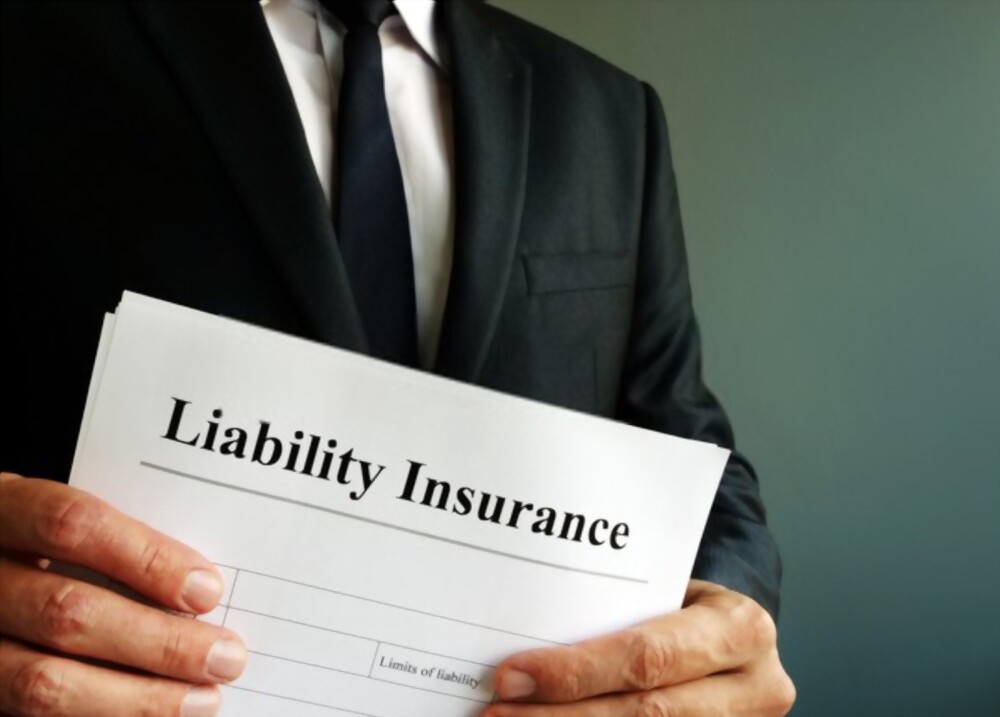
Securing the right business liability insurance is a proactive step toward protecting your business’s future. By understanding the various types of coverage, the factors that influence costs, and the claims process, you can make informed decisions that mitigate risk and safeguard your financial stability. Remember, proactive risk management, combined with a comprehensive insurance policy, is the best way to navigate the uncertainties of business ownership and maintain long-term success.
Don’t leave your business vulnerable; invest in the protection it deserves.
FAQ Corner
Can I get business liability insurance if I’m a freelancer?
Yes, many insurance providers offer policies specifically tailored to freelancers and independent contractors.
How much does business liability insurance typically cost?
Costs vary greatly depending on factors like your industry, location, and the level of coverage you choose. Getting quotes from multiple providers is recommended.
What happens if I don’t have business liability insurance and a claim is filed against me?
You could face significant legal fees and potentially devastating financial losses if you’re found liable. Your personal assets may also be at risk.
How long does it take to file a claim?
The claims process varies by insurer but generally involves reporting the incident promptly and providing all necessary documentation.
Can I change my business liability insurance policy mid-term?
You may be able to, but there might be penalties or restrictions depending on your policy and the insurer’s terms.


